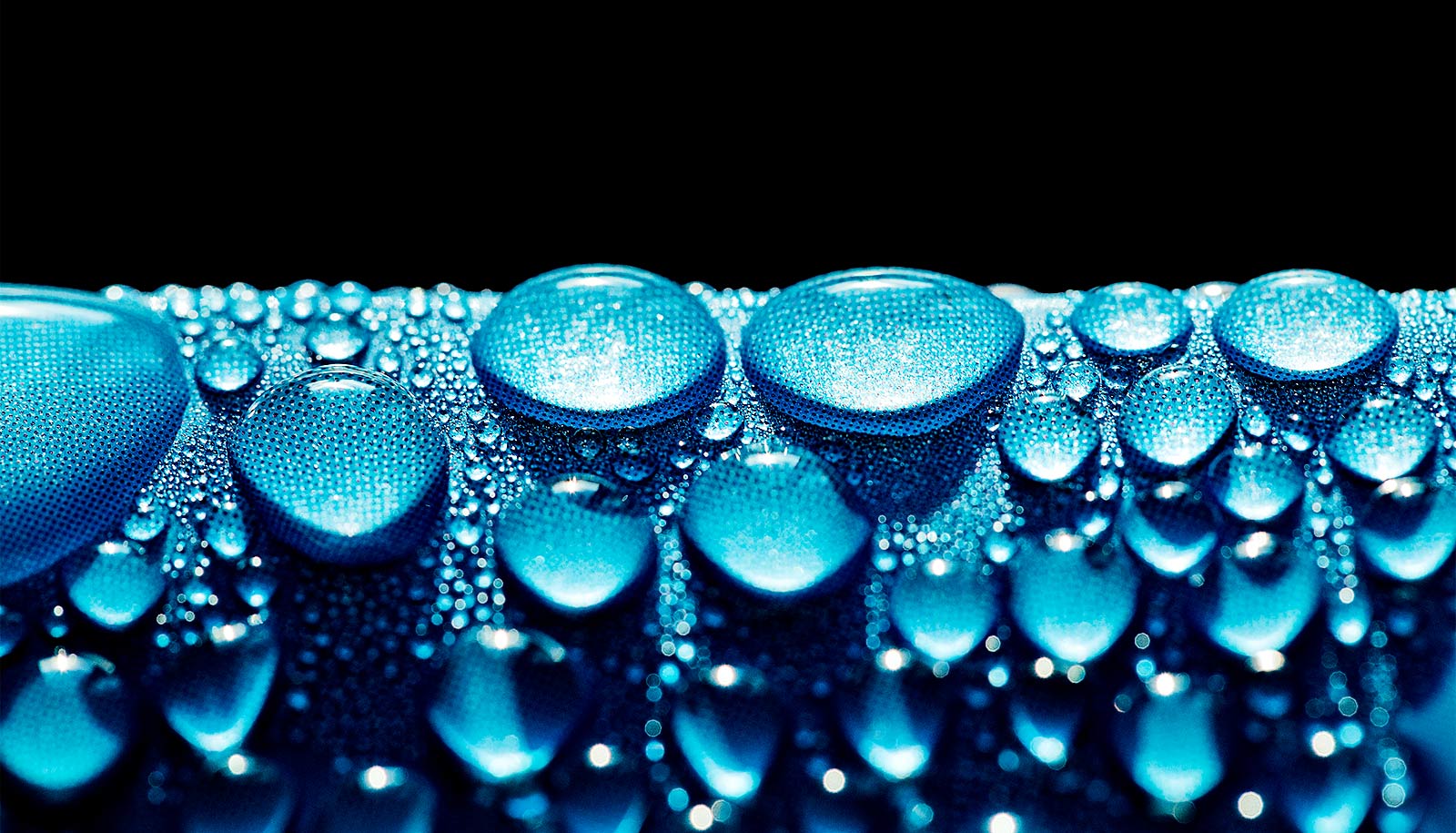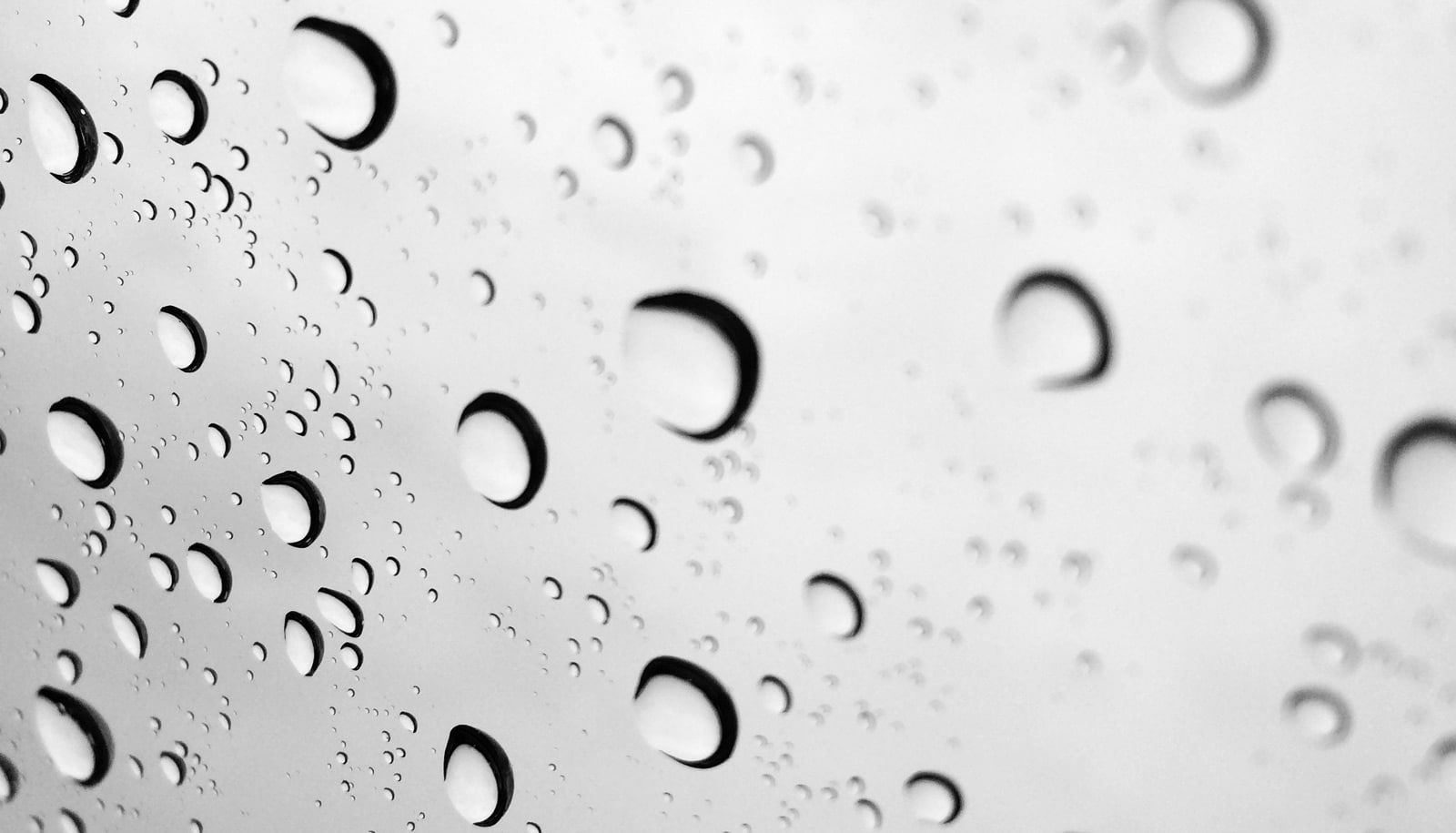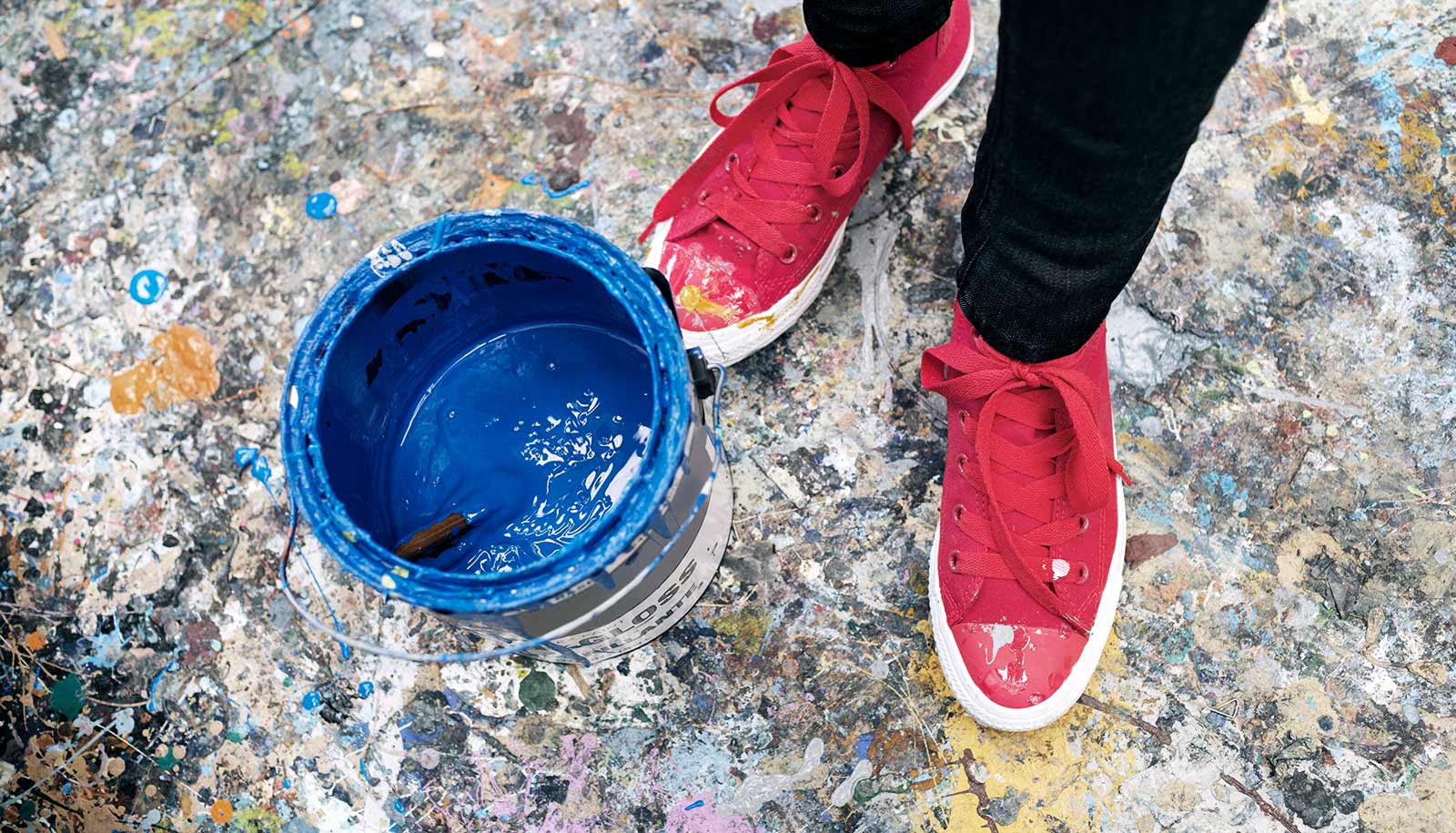Researchers can now explain why some water droplets bounce like a beach ball off surfaces, without ever actually touching them.
The research could help make the design and engineering of future droplet technologies more precise and efficient.
Collisions between liquid drops and surfaces, or other drops, happen all the time. For example, small water drops in clouds collide with each other to form larger drops, which can eventually fall and hit a solid, like your car windshield.
Drops can behave differently after the point of collision, some make a splash, some coat the surface cleanly, and some can even bounce like a beach ball.
In a new article in Physical Review Letters, researchers outline their explanation for experimental observations of bouncing droplets.
Remarkably, the behavior of a tiny cushion of air the height of which can reach the scale of nanometers determines the fate of the drop. To get a sense of scale, think of something the size of the moon bouncing from a backyard trampoline.
Even if the surface is perfectly smooth, like in laboratory conditions, an affinity between drop molecules and the wall molecules (known as van der Waals attraction), will mean that in most cases the drop will be pinched down onto the surface, preventing it from bouncing.
The research reveals, through highly detailed numerical simulations, that for a droplet to bounce. the speed of collision must be just right. Too fast, and the momentum of the drop flattens the air cushion too thinly. Too slow, and it gives the van der Waals attraction time to take hold. At the perfect speed, though, the drop can perform a clean bounce, like a high jumper just clearing the bar.
“Drop collision is integral to technology we rely upon today, for example, in inkjet printing and internal combustion engines. Understanding better what happens to colliding droplets can also help the development of emerging technologies, such as 3D printing in metal, as their accuracy and efficiency will ultimately depend on what happens to drops post collision,” says Duncan Lockerby, a professor in the School of Engineering at the University of Warwick.
“Importantly, the air cushion is so thin that molecules will often never encounter one another when crossing it, akin to the emptiness of outer space, and conventional theories fail to account for this,” says James Sprittles from the university’s Mathematics Institute.
“The new modeling approach we’ve developed will now have applications to droplet-based phenomena ranging from cloud physics for climate science through to spray cooling for next generation electronics,” he says.
Source: University of Warwick


